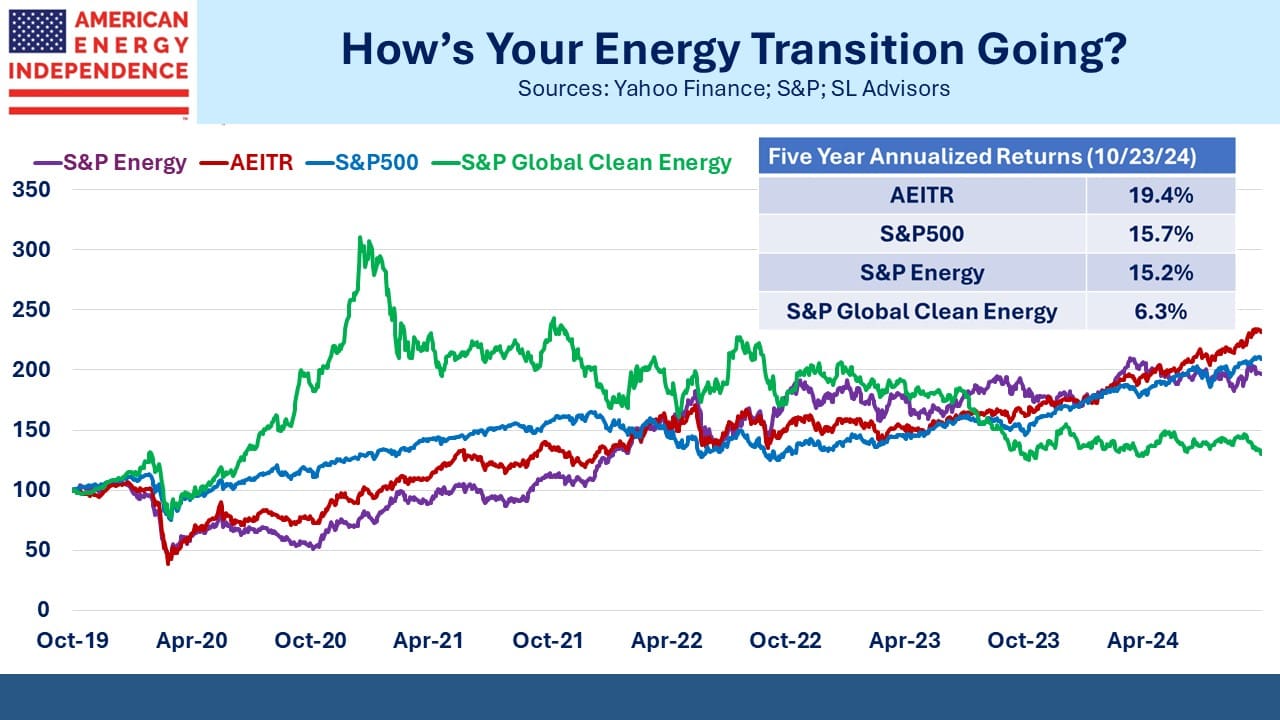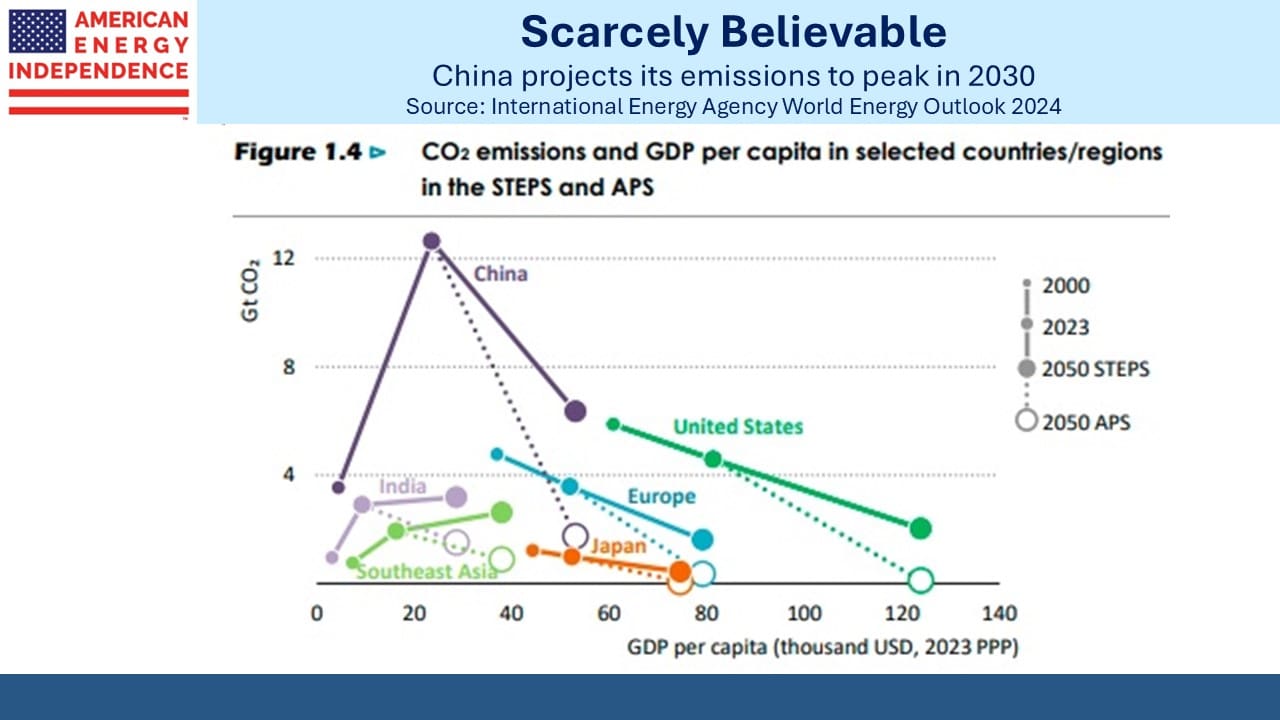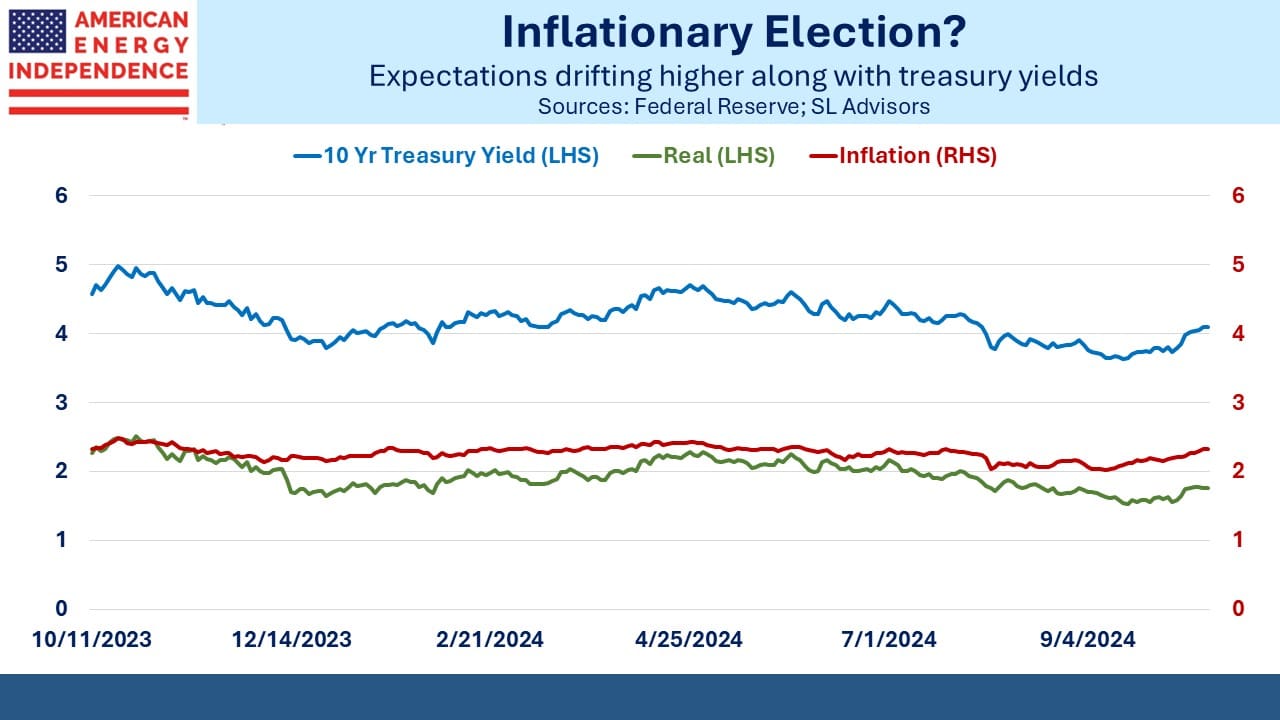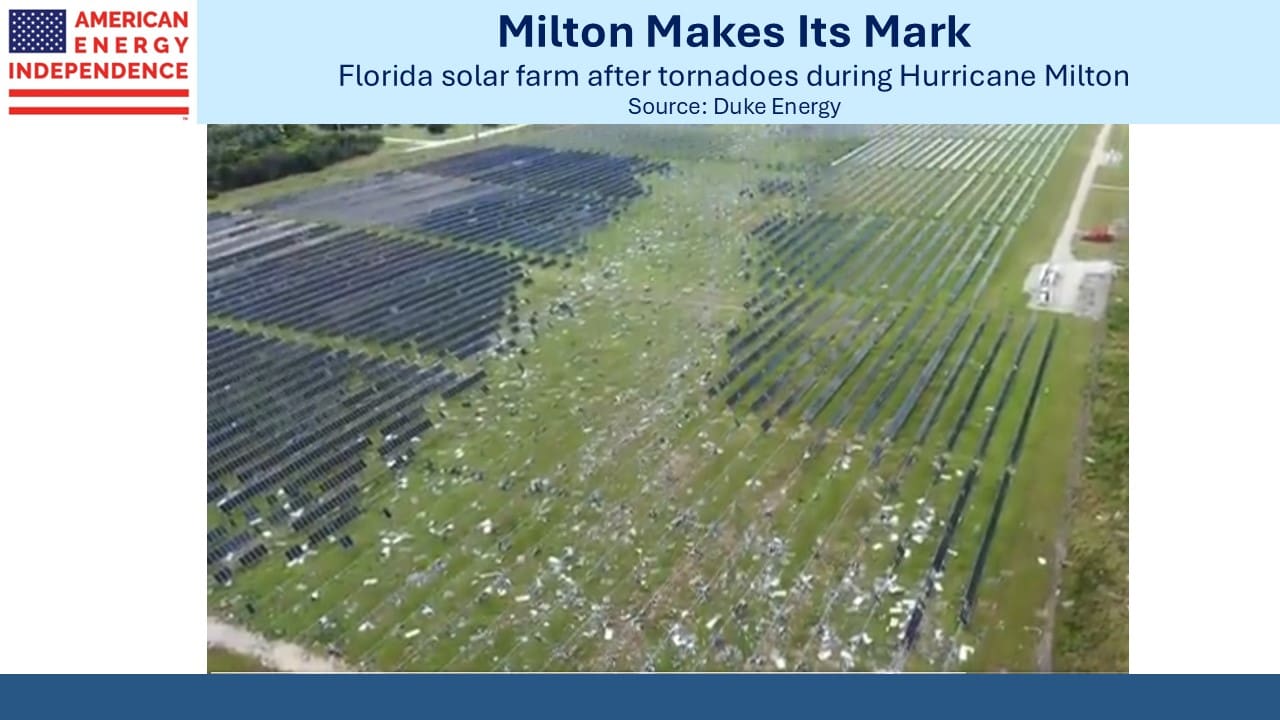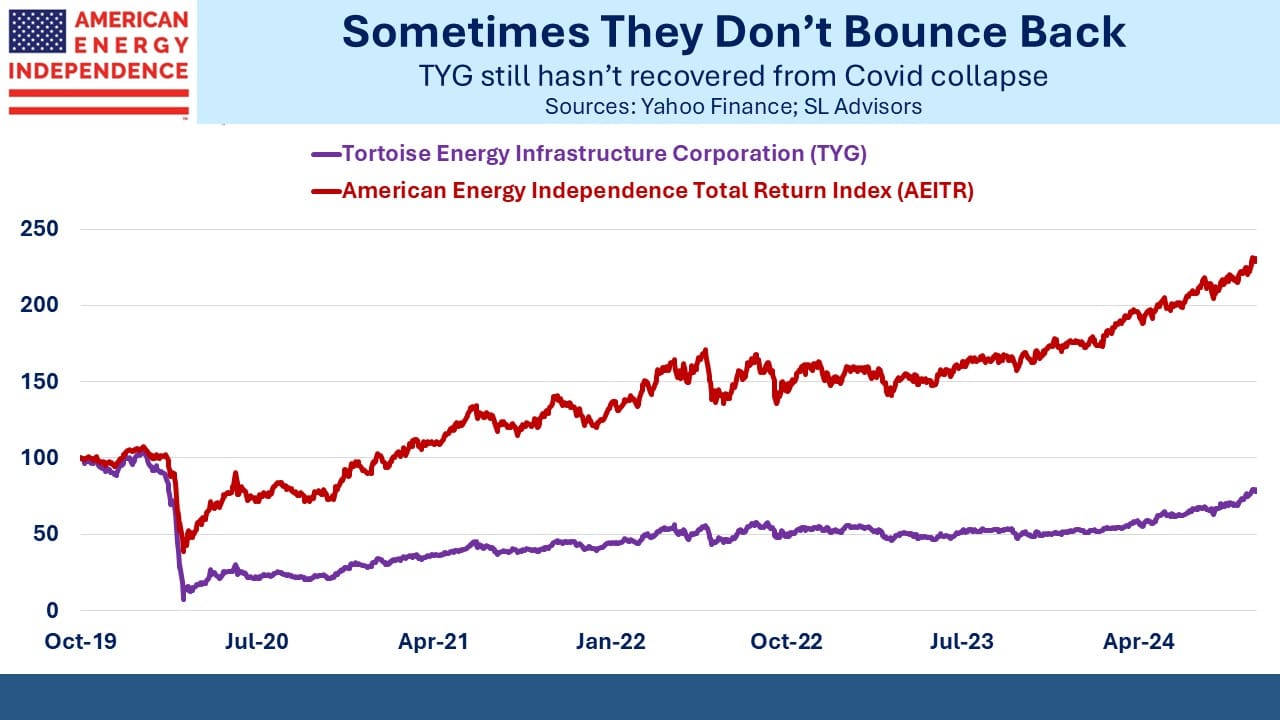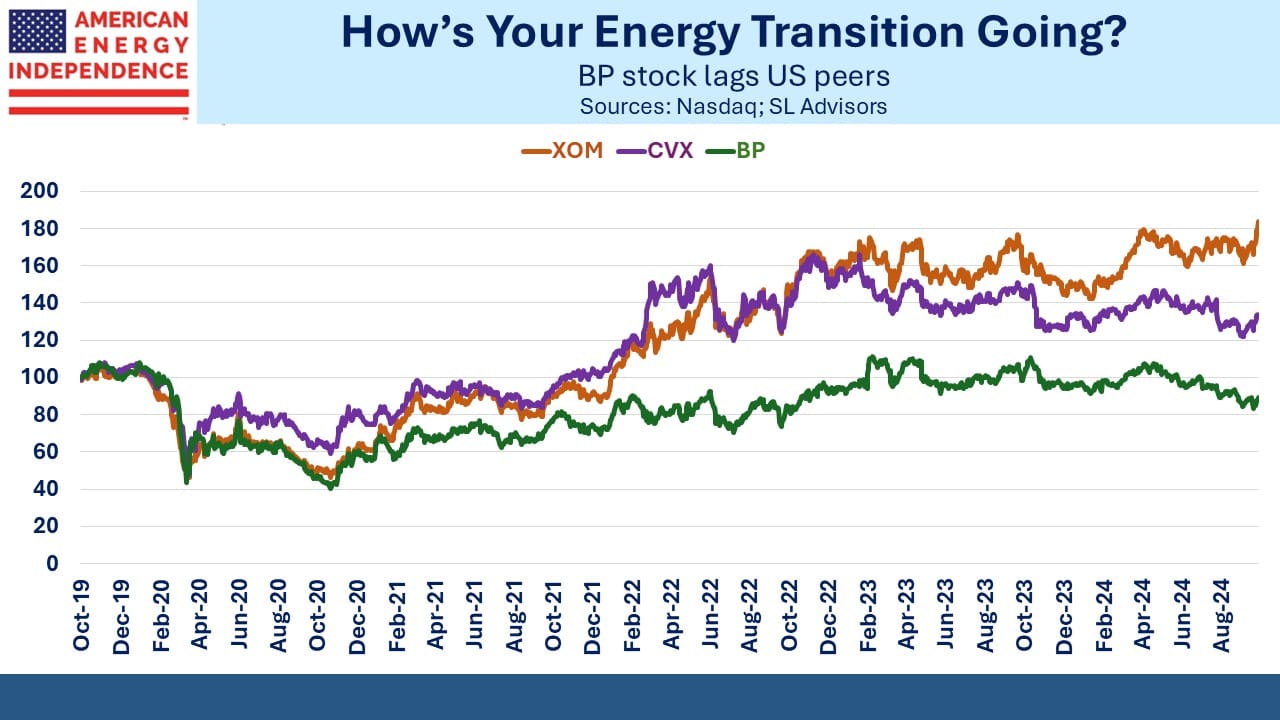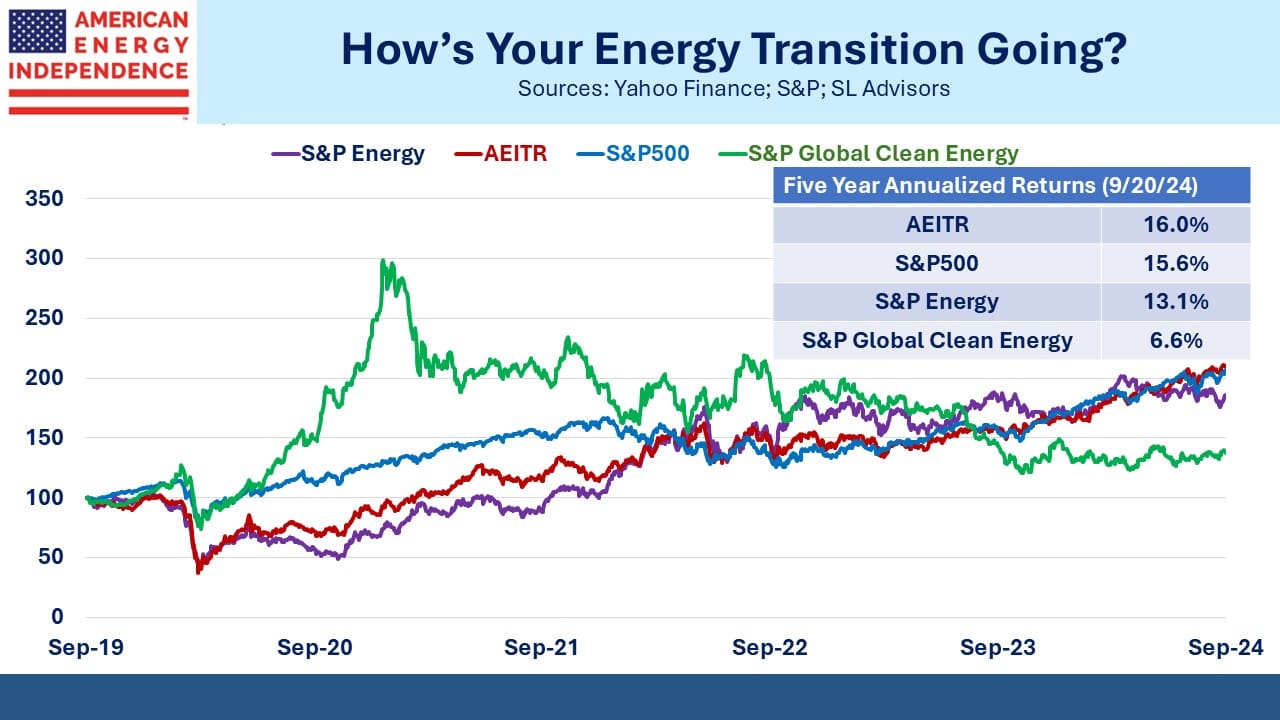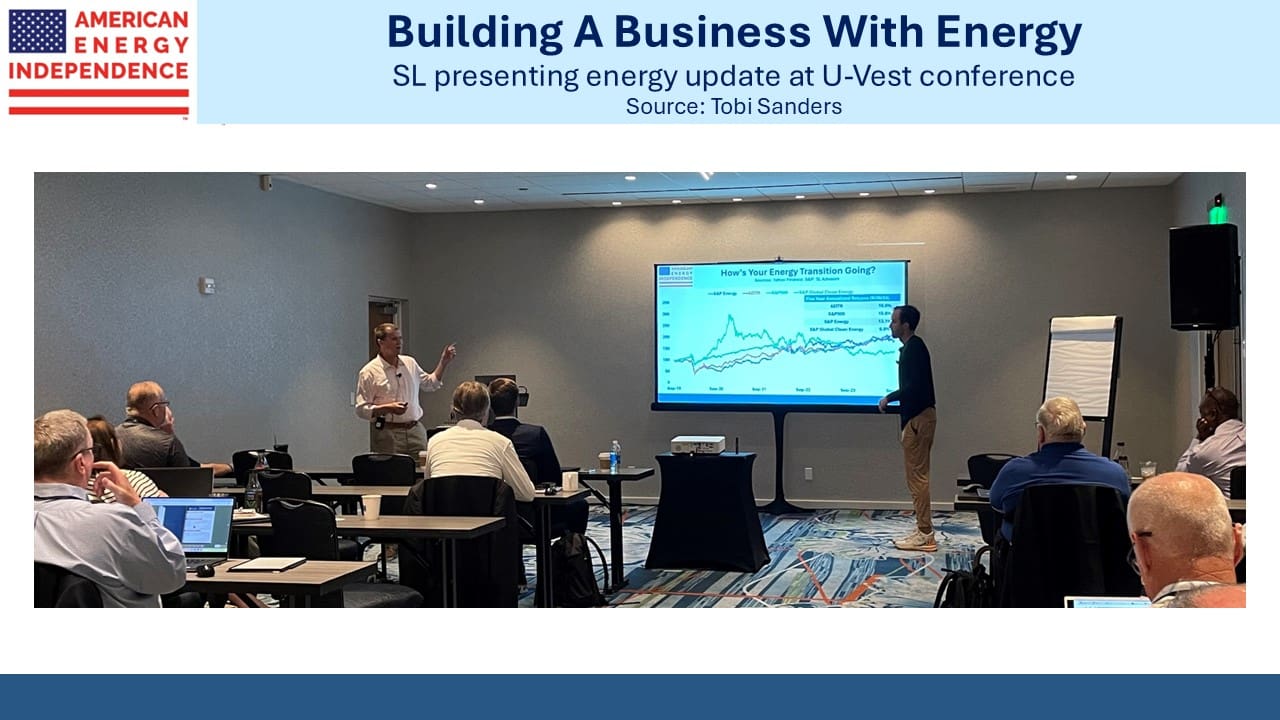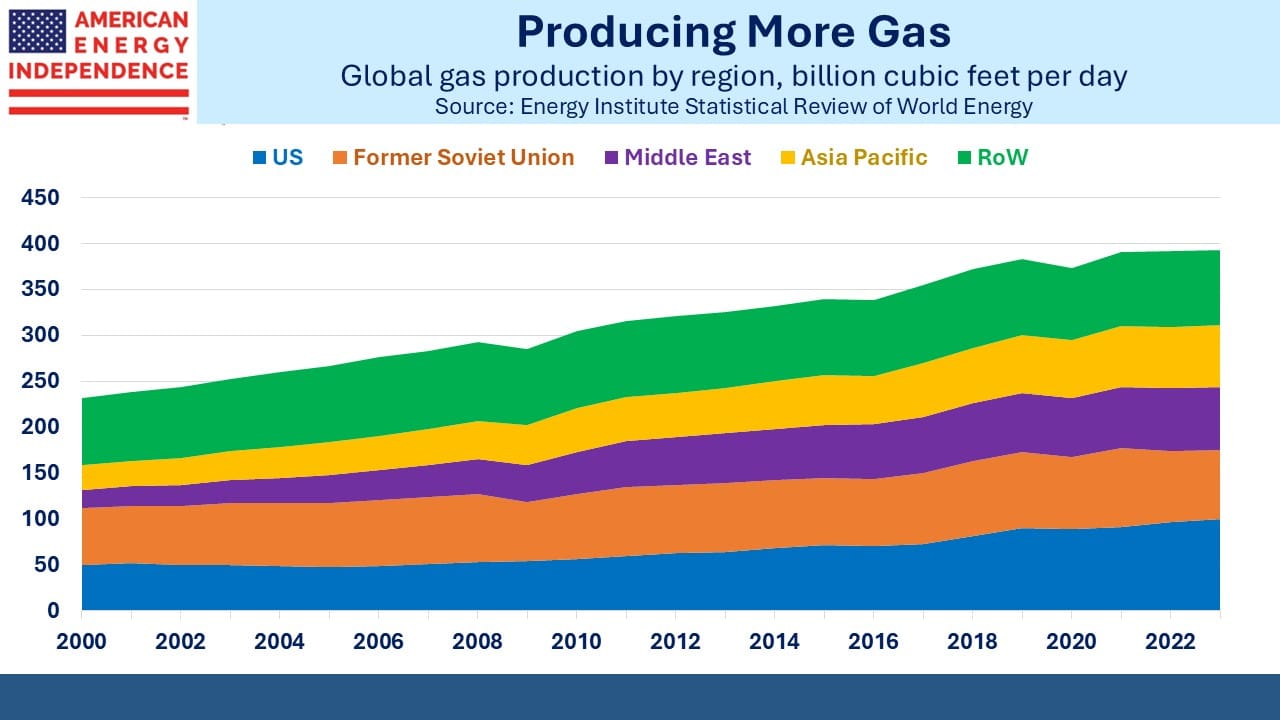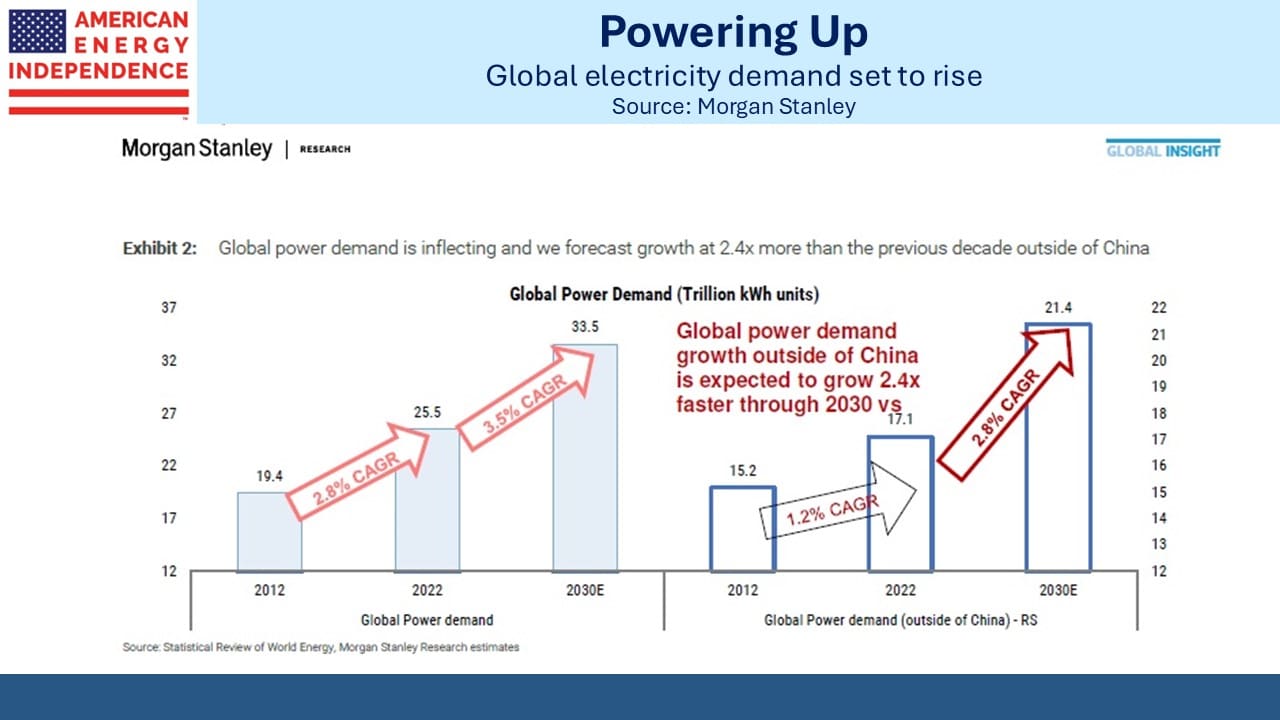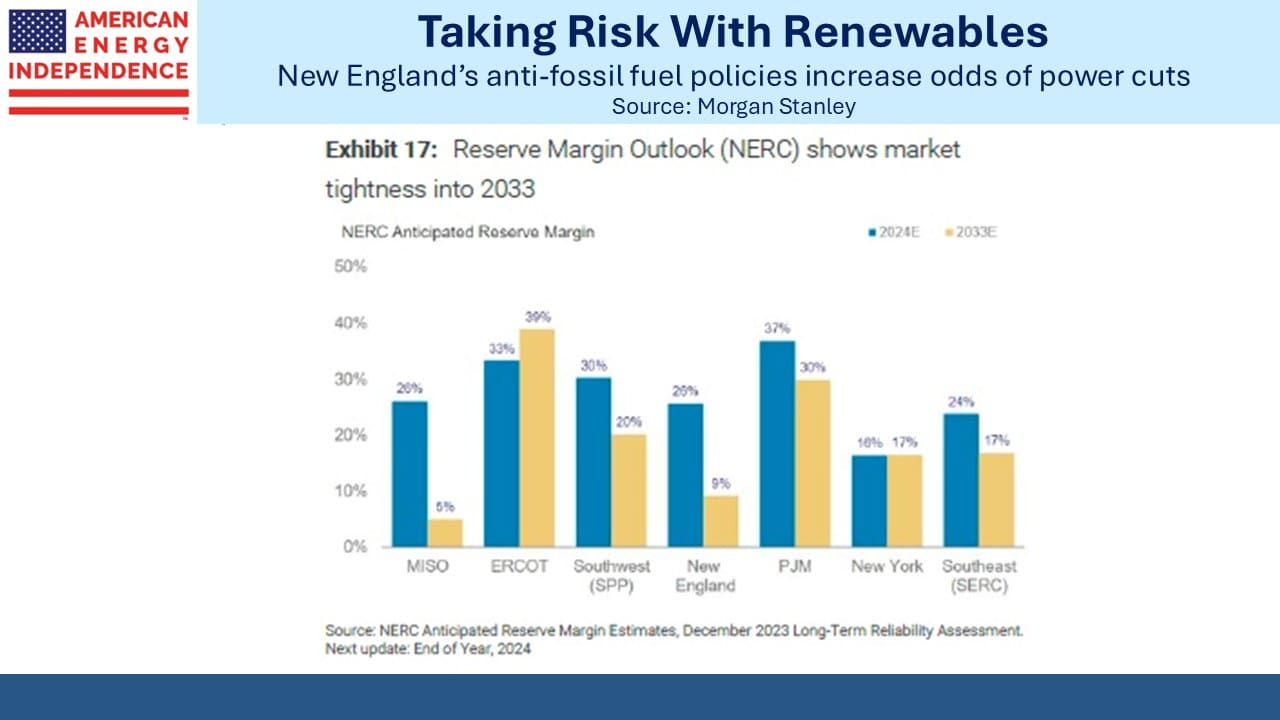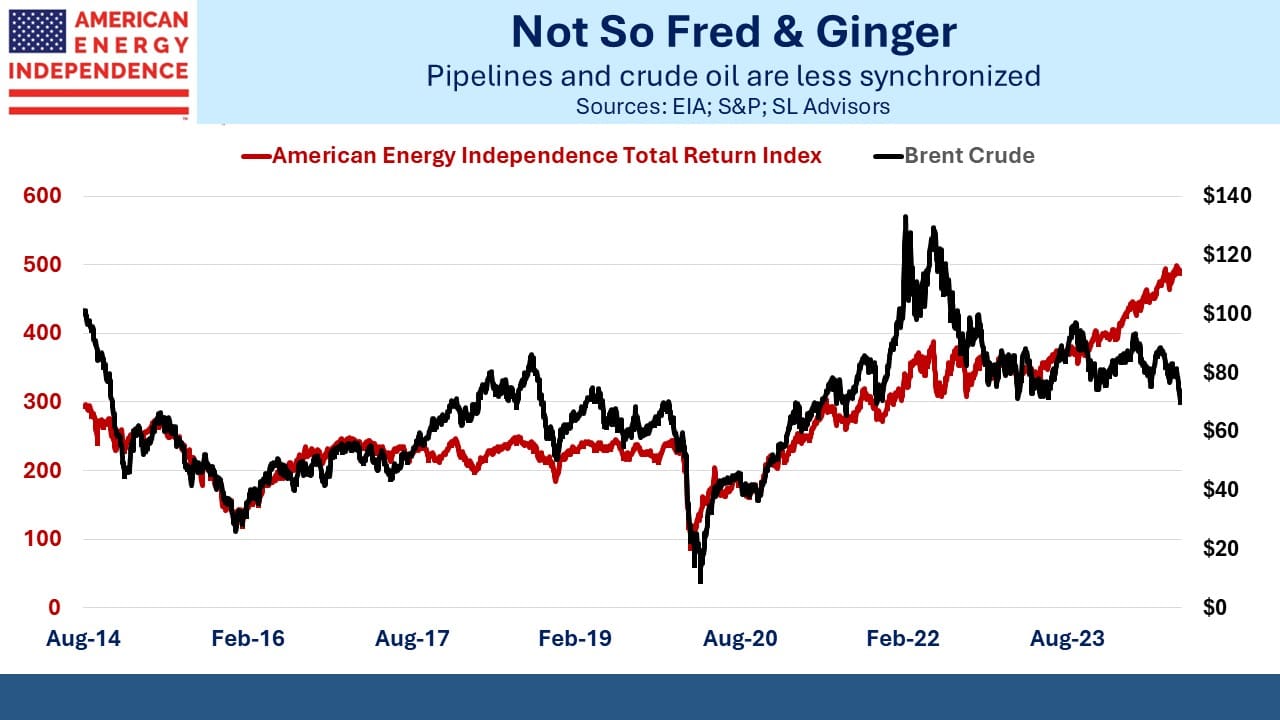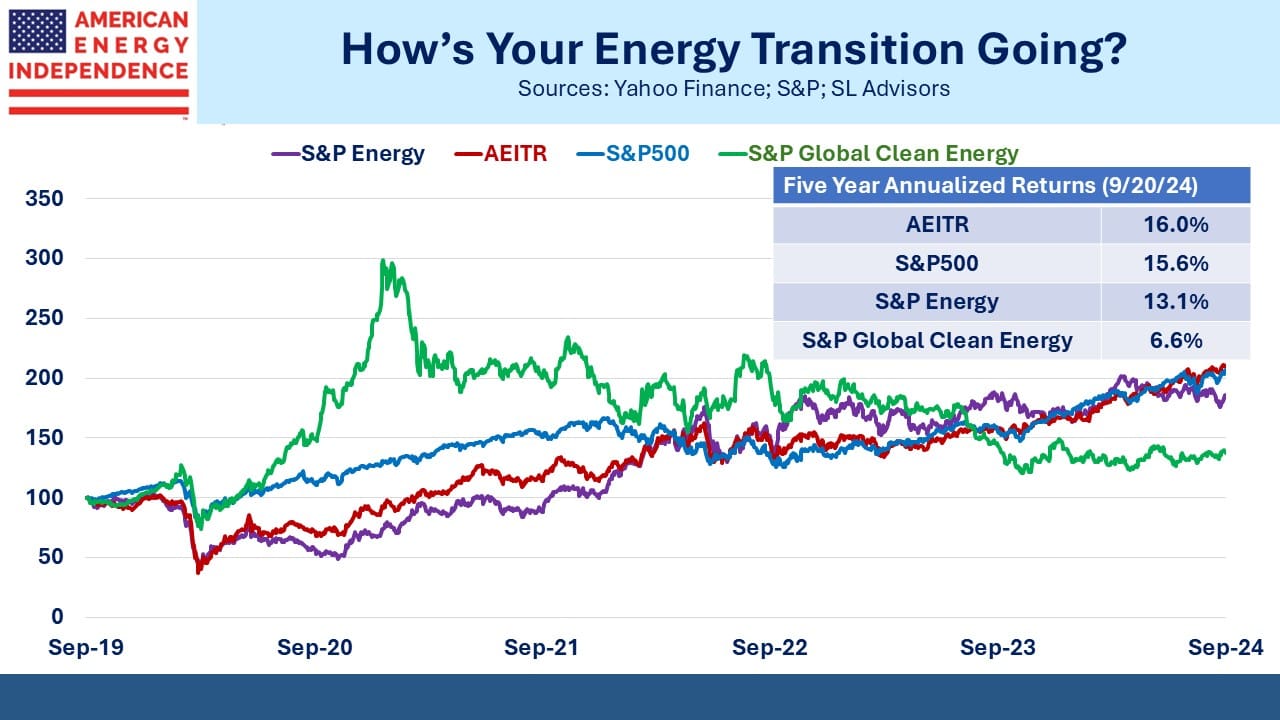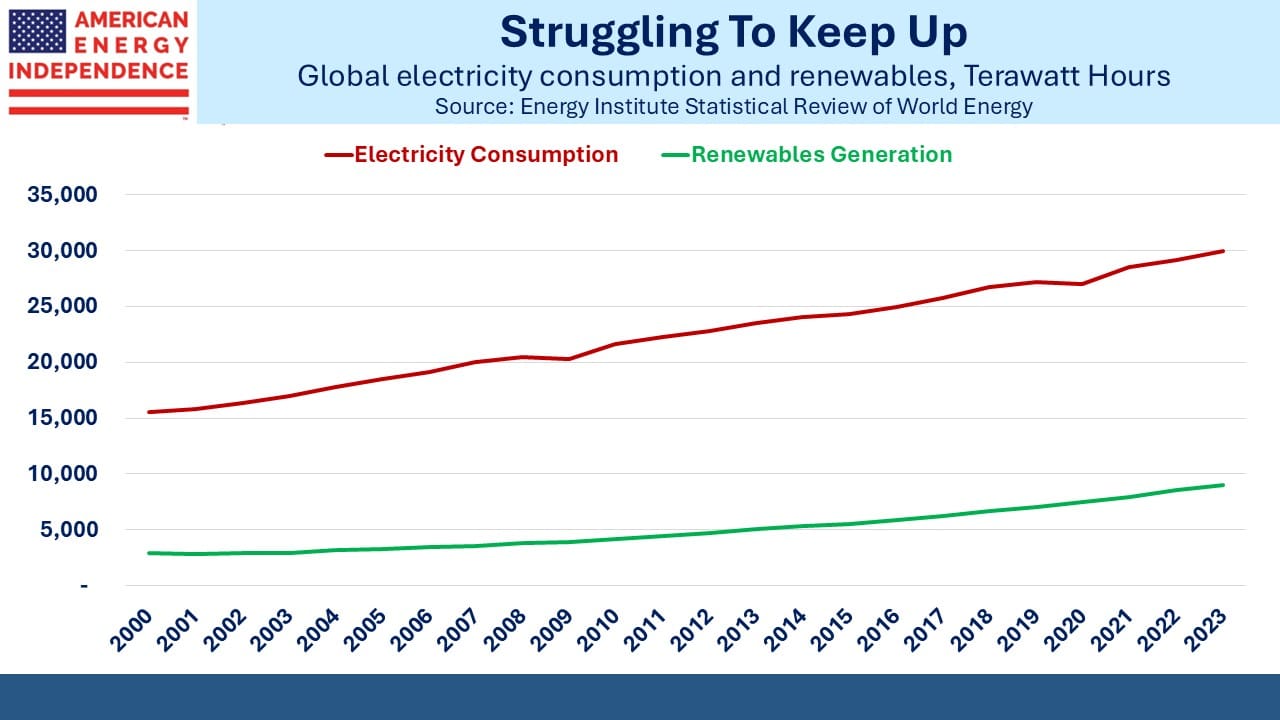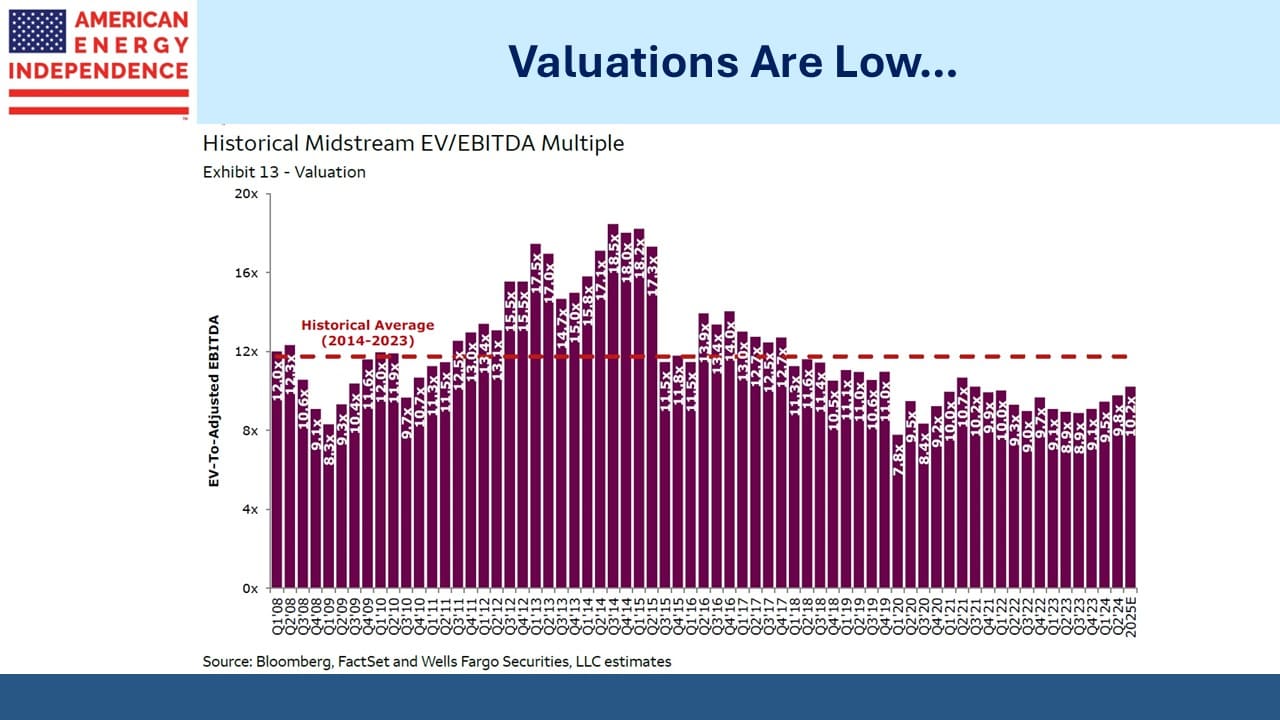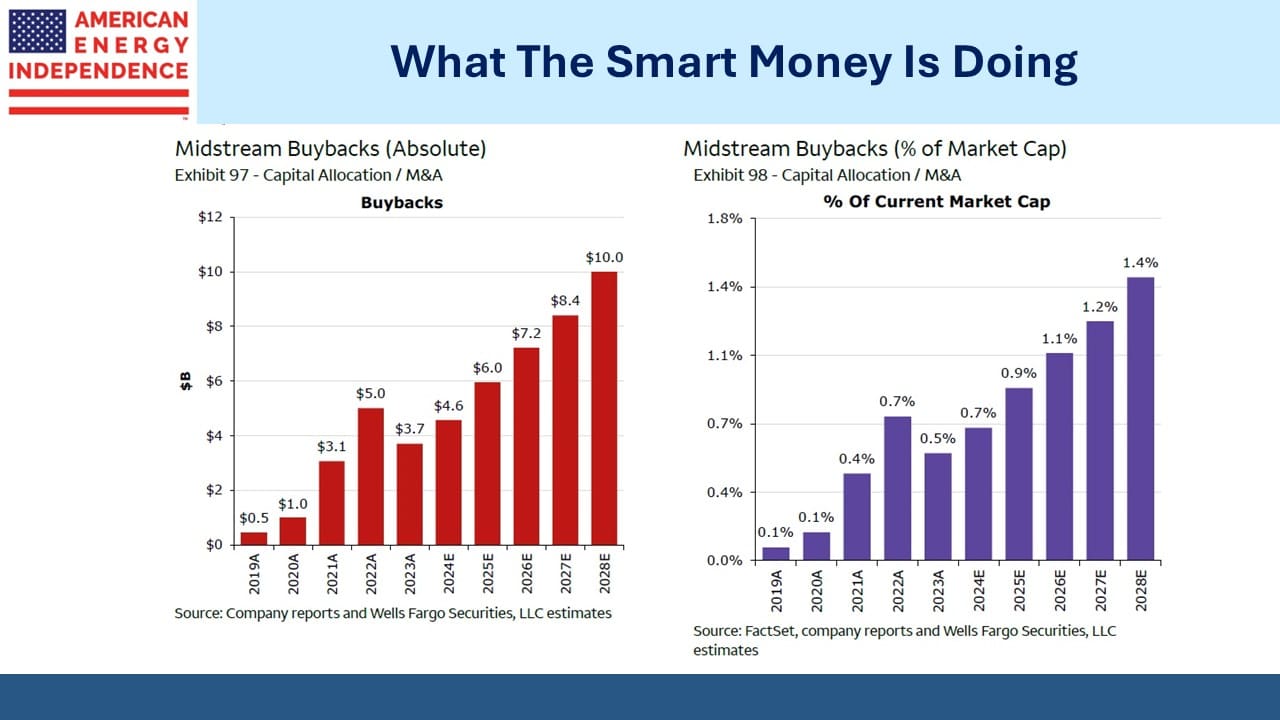The Natural Gas Energy Transition

The long term demand outlook for natural gas continues to improve. India is likely to double its consumption by 2040, and much of that will rely on imports of Liquefied Natural Gas (LNG). This will offset coal consumption, lowering local pollution as well as CO2 emissions.
The International Energy Agency (IEA), normally a tireless promoter of renewables, is warning that insufficient investment in new gas production risks supply shortages. They blame regulatory challenges for impeding the growth of much-needed LNG exports. The White House should take note.
The US is seeing the fastest growth in new gas-fired power production in years, as utilities gear up for rising electricity demand from data centers. The renaissance that nuclear power is enjoying is a positive step, but the deals announced by Microsoft, Google and Amazon won’t deliver power until the 2030s. Data centers are being built now.
The media coverage of the energy transition is so relentlessly one-sided that you might think the constructive outlook for natural gas is a minority view. Current US exports of LNG should double over the next five years, from 13 Billion Cubic Feet per Day (BCF/D) to around 25 BCF/D. Domestic prices remain low, at around $2.50 per Million BTUs (MMBTUs). The European TTF benchmark is around $13 and the Asian JKM above $13.50. Increased US exports will close some of the regional price gap.
November 2026 US natural gas futures are at $3.80 per MMBTU, around $1.30 above spot prices. In a sign that prices may need to rise, on Friday the Energy Information Administration (EIA) reported that the output of dry gas from shale formations is on track to be down this year. This would be the first time since the EIA started tracking such data in 2000.
As our investors and blog readers know, we are biased towards natural gas. The belief that solar and wind would soon displace hydrocarbons as the world’s most important source of energy never convinced us. Energy demand is growing, driven by developing countries seeking higher living standards.
Media articles routinely hail the growth in solar and wind capacity, and yet that growth hasn’t even been sufficient to meet the demand for new energy. Hydrocarbons have provided around 80% of the world’s primary energy for decades and it’s barely changed during the 21st century.
The truth is the only energy transition going on is to natural gas.
Moreover, renewables are a lousy business. As we often note, if you want to make a small fortune, invest a big one in clean energy. Going back five years to before the pandemic briefly hit energy stocks, the S&P Global Clean Energy index has significantly underperformed both the S&P500 and traditional energy.
Midstream Energy Infrastructure, as defined by the American Energy Independence Index, has delivered triple the return.
BP, continuing its embrace of energy realism, is looking to sell its onshore US wind business for $2BN. Last year they wrote down their offshore US wind business by $1.1BN. “Ultimately, offshore wind in the US is fundamentally broken,” said the company’s former renewables chief Anja-Isabel Dotzenrath last November. She left BP in April.
It’s hard to find pure-play investments that offer a leveraged bet on growing gas demand. Natural gas futures are priced substantially above spot prices. E&P companies are an obvious choice. Range Resources (RRC) produces natural gas, Natural Gas Liquids (NGLs) and a modest amount of oil from the Marcellus and Utica shales in Appalachia. Although they hedge their output over the next year or two, a sustained increase in gas prices would clearly benefit them.
Unfortunately, RRC trades at 2X book value. Its hydrocarbon reserves are valued on its balance sheet using current prices, but the stock is priced at a significant premium. Other peer companies aren’t much better.
LNG export companies offer a good way to bet on higher export volumes. Cheniere dominates the sector, handling half the volumes we send overseas. The Administration’s pause on new export permits, which JPMorgan CEO Jamie Dimon called “naive”, will be lifted under a new Trump administration. Just as betting markets are signaling a Trump victory, there are signs that traders are buying stocks that will benefit from more coherent regulation.
NextDecade dropped sharply in the summer when an environmental group persuaded a judge to issue a stay on a permit issued by FERC (see Sierra Club Shoots Itself In The Foot). Although presidents have limited ability to impact volumes of oil and gas output, investors will welcome the more thoughtful implementation of energy regulation that will return to the White House with Trump. NextDecade is one stock that has rallied recently on such hopes.
We have two have funds that seek to profit from this environment:
Energy Mutual Fund Energy ETF

